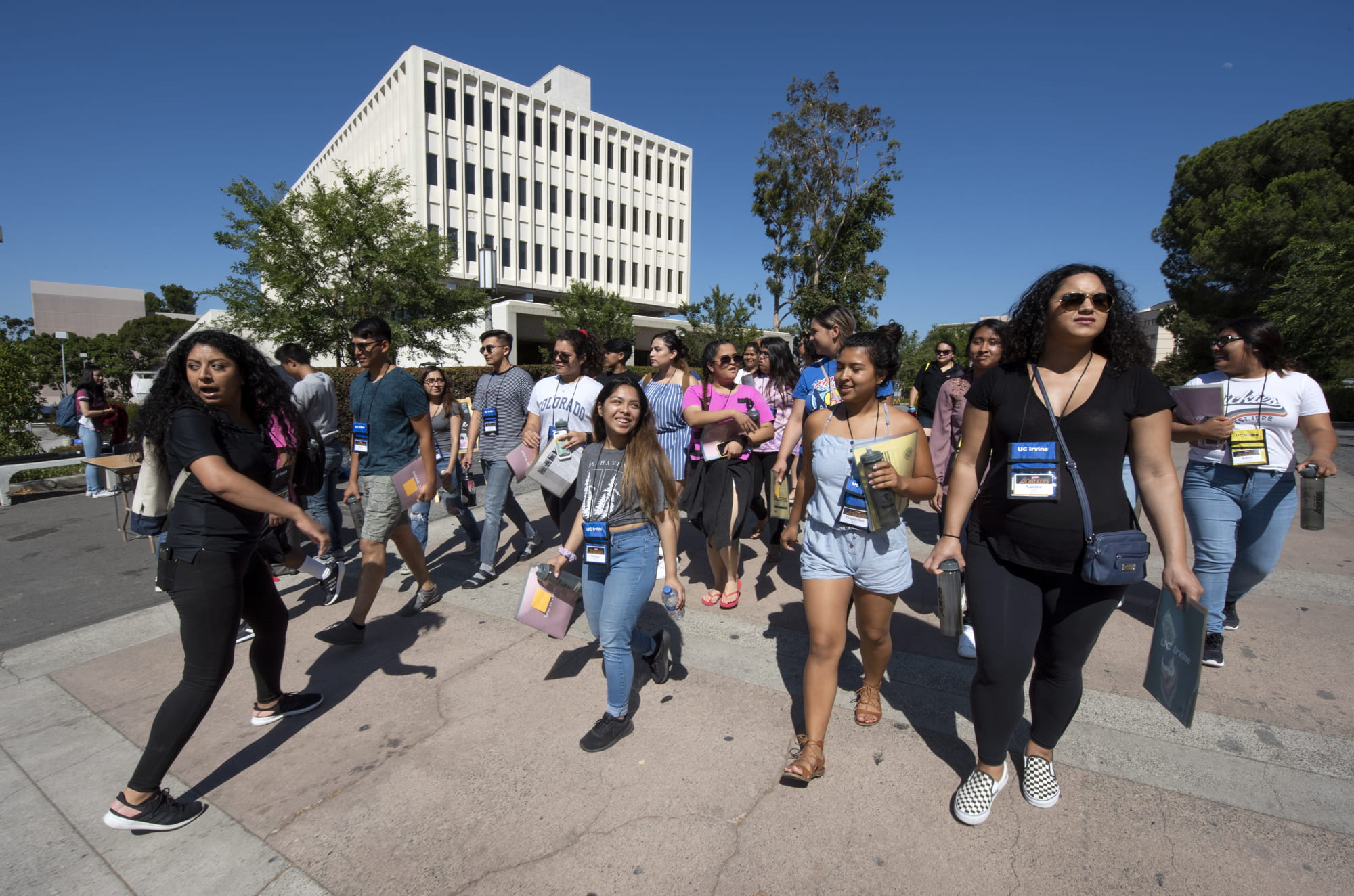UCI cited as leader in using community college pipelines to increase student socioeconomic diversity
American Talent Initiative Impact Report details progress of the national goal of enrolling 50,000 additional low- and moderate-income students by 2025

Irvine, Calif., Dec. 17, 2018 — An American Talent Initiative Impact Report issued today showcases the success of the University of California, Irvine as a leader in the initiative’s commitment to socioeconomic diversity.
Founded in 2016 by Bloomberg Philanthropies, the Aspen Institute’s College Excellence Program, and Ithaka S+R, the ATI is a consortium of 108 of the nation’s top colleges and universities joined together to substantially increase the number of talented low- and moderate-income students at America’s undergraduate institutions with the highest overall graduation rates.
The 2018 ATI Impact Report offers the first look at the progress achieved during the initiative’s first two years. The report examines the enrollment trends among ATI members, showing UCI as the leader in using community college pipelines to increase socioeconomic diversity. The report shows that UCI has made the single largest contribution to ATI’s 50,000-by-2025 goal to date, adding 2,323 Pell students from 2012-13 to 2017-18, with nearly 900 Pell students added in the last two years.
With close to half of these students enrolling as transfer students, the UCI’s transfer cohort has grown from 1,702 students in fall 2012 to 2,957 students in fall 2017, an impressive increase of 75 percent. This growth is a result of a deep commitment to increasing college access, especially for transfer students.
“Higher education institutions have an obligation to reach out to overlooked communities and create a pipeline for them to attend,” said UCI Chancellor Howard Gillman.
“We are honored to be recognized as the top contributor to the ATI nationwide enrollment goal for our work with transfer students,” said Michael Dennin, vice provost for the Office of Teaching and Learning and dean of UCI’s Division of Undergraduate Education. “At UCI, student success is our top priority; and it is nice to see the data proving the impact of our efforts.”
The ATI mission
ATI is focused on addressing the challenge that too few talented, low- and moderate-income students from across the country are being enrolled at U.S. colleges and universities with the highest graduation rates. Since its launch, ATI members increased their enrollment of low- and moderate-income students by 7,291, an increase that represents about 15 percent of the 50,000-by-2025 goal, according to the Impact Report.
As part of their ATI commitment, each member institution sets goals and strategies to improve socioeconomic diversity on their campuses. Members submit these goals and strategies via a “Collective Impact Framework,” or CIF, which, along with numerous convenings, webinars and campus visits over the past two years, allow for ATI staff to aggregate, analyze, and synthesize the goals and strategies employed across the membership.
One strategic outreach example can be seen by UCI’s Summer Scholars Transfer Institute, created in 1993, which invites 120 community college students per year to live and study on campus for 10 days, at no cost. The immersion experience aims to give potential transfer students “a sense that they do belong here, that a four-year university is reachable,” says Santana Ruiz, deputy director of UCI’s Center for Educational Partnerships.
Pell grant graduation success
Nationwide, statistics show that just 49 percent of Pell grant recipients earn a bachelor’s degree within six years. At UCI, in contrast, the graduation rate is a remarkable 85 percent. UCI also leads the country’s top schools in share of 37 percent of Pell grant recipients (who typically hail from low-income families), putting UCI near the top of all high-graduation-rate public institutions. That means UCI welcomes more Pell grant students than the entire Ivy League combined.
The impact report from ATI adds to an impressive list of accolades that UCI has been recognized for in their commitment to the UCI strategic pillar of being first-in-class for upward economic mobility of underserved student populations.
There is still much work needed to achieve the 50,000 by 2025 goal. But early evidence and best practices from institutions like UCI strongly suggests that the goal is within reach—a goal that will benefit students and society well beyond 2025.
About the University of California, Irvine: Founded in 1965, UCI is the youngest member of the prestigious Association of American Universities. The campus has produced three Nobel laureates and is known for its academic achievement, premier research, innovation and anteater mascot. Led by Chancellor Howard Gillman, UCI has more than 30,000 students and offers 192 degree programs. It’s located in one of the world’s safest and most economically vibrant communities and is Orange County’s second-largest employer, contributing $5 billion annually to the local economy. For more on UCI, visit www.uci.edu.


